Up STREAM SURFING – the New Way of SURFING a River
In a world where rivers have flowed freely for centuries, a new trend is emerging – Upstream Surfing. Picture the thrill of riding against the current, defying nature’s course in a daring aquatic adventure.
But what exactly does this unconventional surfing experience entail? Stay tuned to discover the innovative techniques, challenges, and rewards of mastering the art of Upstream Surfing.
Key Points
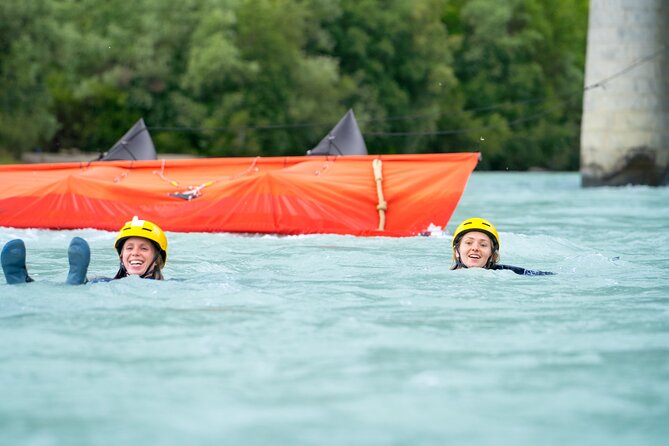
- Upstream surfing offers a thrilling and innovative approach to catching waves.
- It promotes sustainability, community engagement, and physical challenge.
- Understanding river dynamics and hydrodynamics is essential for effective wave riding.
- Safety measures, proper gear selection, and river choice are crucial for a secure upstream surfing experience.
Exploring the Concept of Upstream Surfing

Exploring the concept of upstream surfing reveals a thrilling and innovative approach to catching waves in a unique and adventurous way. This form of river surfing has a profound environmental impact, as surfers engage with the natural flow of the river, promoting sustainability and a deeper connection to the water.
On top of that, upstream surfing fosters community engagement, bringing together individuals to share experiences and support each other in this exhilarating activity. With its cultural significance deeply rooted in the historical evolution of surfing, this style pays homage to traditional wave-riding practices while pushing boundaries and creating a new chapter in the sport’s narrative.
Upstream surfing not only offers a physical challenge but also a rich tapestry of environmental awareness, community building, and cultural appreciation.
Understanding the Mechanics of River Surfing

Understanding the mechanics behind river surfing requires a keen appreciation for the dynamic forces at play in this exhilarating water sport. To grasp the intricacies of river surfing, individuals must explore the realm of river dynamics and wave formation while also exploring the principles of hydrodynamics and wave physics.
Here are four key aspects to consider:
- River Dynamics: The movement and behavior of water in a river play a crucial role in creating surfable waves.
- Wave Formation: Waves in rivers are formed by various factors such as obstacles, riverbed shapes, and water flow patterns.
- Hydrodynamics: Understanding how water moves and interacts with the riverbed is essential for navigating and riding river waves effectively.
- Wave Physics: Delving into the science behind wave energy and propagation helps surfers anticipate and ride waves with precision and skill.
Benefits of Upstream Surfing Over Traditional Surfing
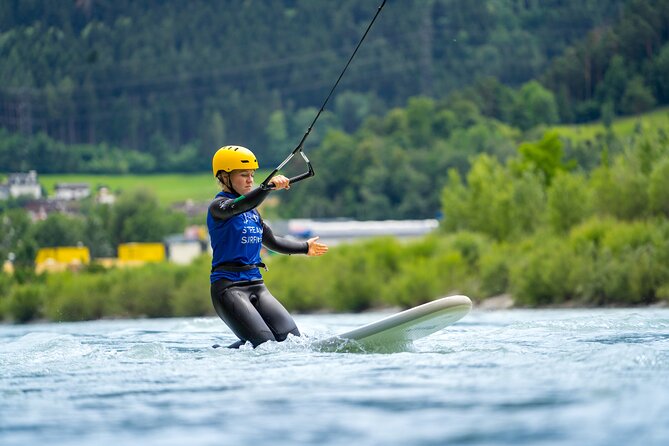
Upstream surfing offers a unique and invigorating twist on traditional surfing, providing enthusiasts with a thrilling experience that challenges their skills and pushes the boundaries of the sport.
One of the key benefits of upstream surfing over traditional surfing is the significant health advantages it offers. This activity enhances cardiovascular fitness, core strength, and balance, contributing to an overall improvement in physical well-being.
Plus, upstream surfing promotes skill development by requiring surfers to navigate against the current, honing their technique and agility.
On top of that, this form of surfing has a positive environmental impact as it doesn’t rely on artificial waves, reducing energy consumption and environmental footprint.
Lastly, upstream surfing fosters community engagement by bringing together individuals who share a passion for this exciting and dynamic water sport.
Safety Precautions and Participant Guidelines
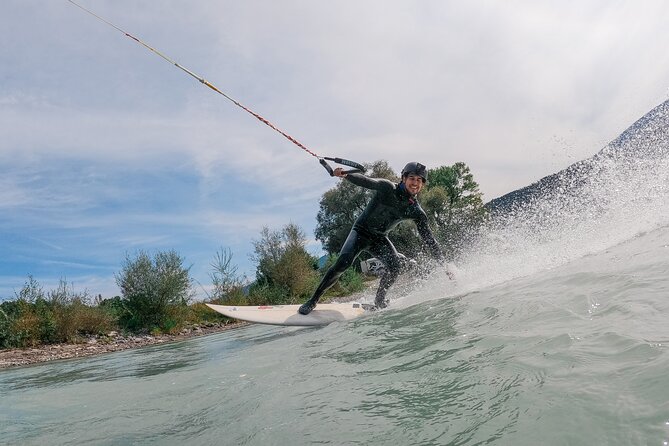
When engaging in the exciting sport of river surfing, participants must adhere to essential safety precautions and guidelines to ensure a secure and enjoyable experience on the water. It’s crucial to follow these safety tips and guidelines for skill development:
- Wear appropriate safety gear such as helmets and life jackets.
- Learn and practice proper river surfing techniques before attempting challenging waves.
- Always surf with a buddy or in designated areas with lifeguards present.
- Be aware of water conditions, currents, and potential hazards to make informed decisions while surfing.
Gear and Equipment Required for Upstream Surfing
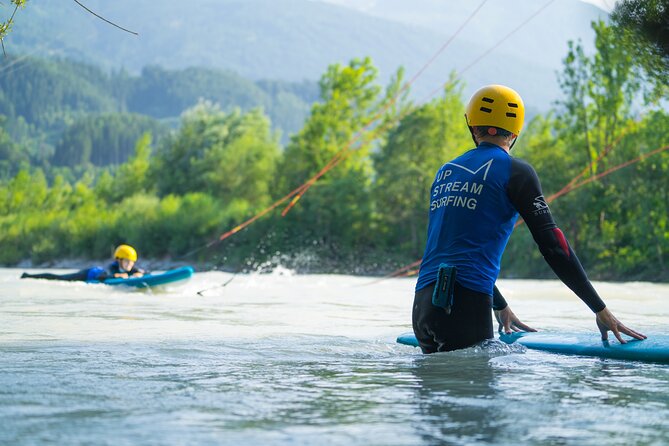
Proper gear and equipment play a crucial role in ensuring safety and enhancing the experience of upstream surfing enthusiasts. When engaging in upstream surfing, selecting the right gear is essential. This includes a sturdy board designed for river use, a properly fitting helmet, a leash to keep the board close, and appropriate footwear for navigating rocky riverbeds.
Regular equipment maintenance is key to preventing malfunctions during a session. Safety measures like wearing a personal flotation device and understanding river currents are imperative for a secure experience. Plus, investing time in skill development through training sessions can enhance proficiency and enjoyment while tackling the challenges of upstream surfing.
Choosing the Ideal River for Upstream Surfing
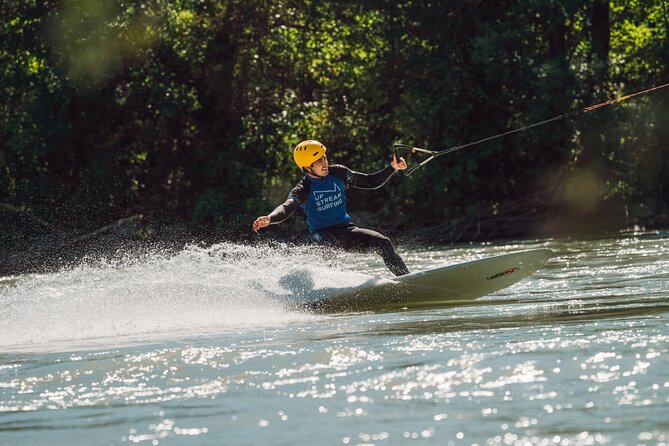
To embark on a successful upstream surfing adventure, selecting the right river is key to maximizing enjoyment and safety. When considering river selection, it’s crucial to assess the flow conditions and your skill development.
Here are some factors to keep in mind:
-
River Selection: Choose a river with suitable characteristics for upstream surfing, such as consistent flow and manageable rapids.
-
Safety Measures: Prioritize safety by opting for rivers with clear entry and exit points, minimal obstacles, and easy access for emergency situations.
-
Flow Assessment: Evaluate the river’s flow rate and ensure it aligns with your skill level to prevent accidents and enhance your experience.
-
Skill Development: Select rivers that offer varying difficulty levels to challenge yourself and improve your upstream surfing abilities.
Tips for Mastering Upstream Surfing Techniques
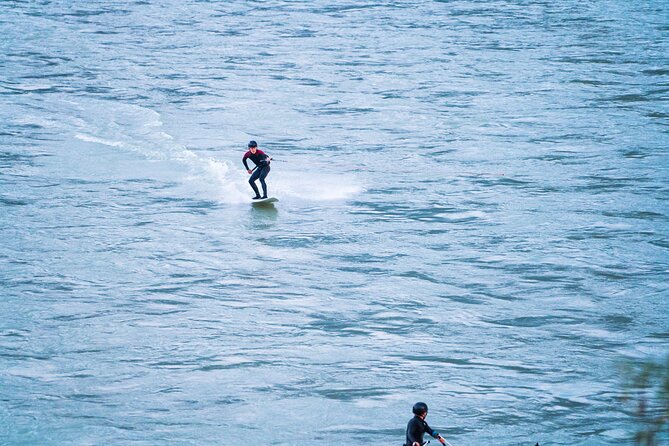
Mastering upstream surfing techniques requires consistent practice and a deep understanding of the river dynamics. To excel, surfers should focus on advanced techniques such as using the river’s natural features to generate speed and control their movements effectively.
Practice drills that simulate upstream conditions can help refine skills and build muscle memory. Common mistakes to avoid include misjudging the current’s strength, failing to anticipate obstacles, and improper positioning on the board.
Troubleshooting tips involve adjusting body positioning, learning to read the water flow better, and staying persistent through challenges. By honing these skills and continuously refining their approach, surfers can navigate upstream waters with confidence and skill.
Common questions

Can Beginners Participate in Upstream Surfing, or Is It Recommended for Experienced Surfers Only?
Beginners can safely participate in upstream surfing with proper safety precautions and beginner techniques. The activity offers a skill progression suited for learners, considering the learning curve. Experienced surfers can also enjoy the unique challenges it presents.
Are There Any Age Restrictions for Participating in Upstream Surfing?
Safety precautions for upstream surfing include age limits. Participants need a moderate fitness level. Not recommended for pregnant individuals or those with serious medical conditions. Experience is required, and beginners should seek guidance.
How Does Weather Conditions, Such as Rain or Strong Winds, Affect Upstream Surfing?
Weather conditions such as rain or strong winds can impact upstream surfing by affecting water currents and visibility. Participants need appropriate gear for safety, including helmets and life jackets. Developing proper technique and skills is crucial for navigating challenging conditions.
Is There a Specific Season or Time of Year That Is Best for Upstream Surfing?
When looking for the best season or time for upstream surfing, it’s essential to consider factors like weather conditions and water levels. Ideal locations and the best equipment will maximize the experience, ensuring safety and enjoyment.
Are There Any Potential Environmental Impacts of Upstream Surfing on the River Ecosystem?
Potential environmental impacts of upstream surfing on the river ecosystem include disturbances to wildlife and river health. Conservation efforts and eco-friendly practices can mitigate these effects, ensuring minimal disruption while promoting sustainability and the preservation of natural habitats.
Last Words
Get ready to experience the thrill of Upstream Surfing like never before!
With the exhilarating adventure of riding against the flow of a river, participants can expect an adrenaline-filled escapade that promises excitement and unforgettable memories.
Remember to adhere to safety precautions and guidelines, gear up with the necessary equipment, and choose the ideal river for your Upstream Surfing journey.
Master the techniques and conquer the river waves for an ultimate water sports experience!